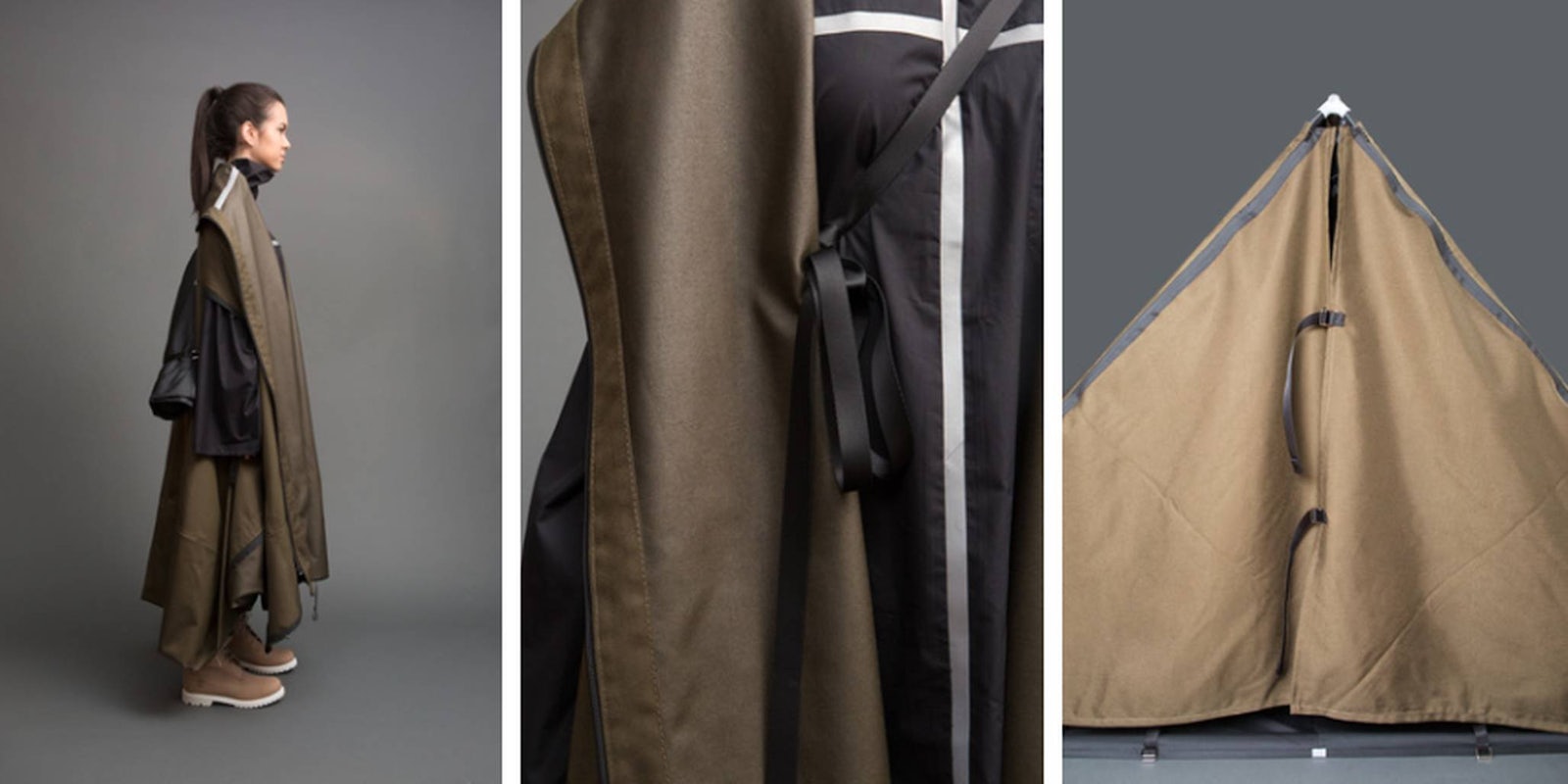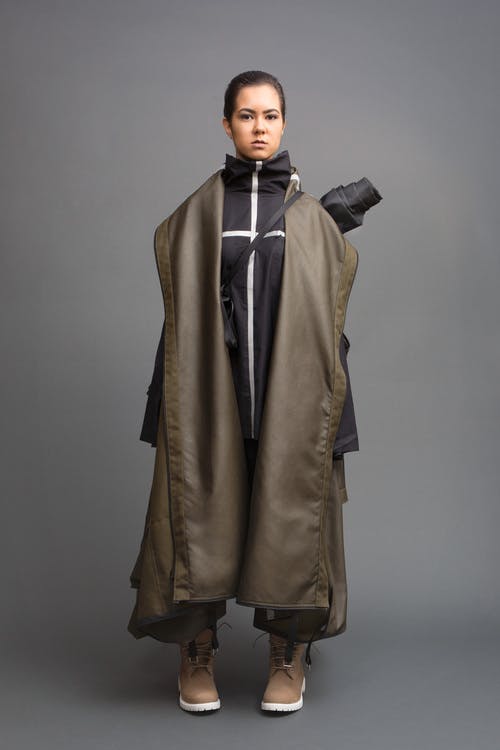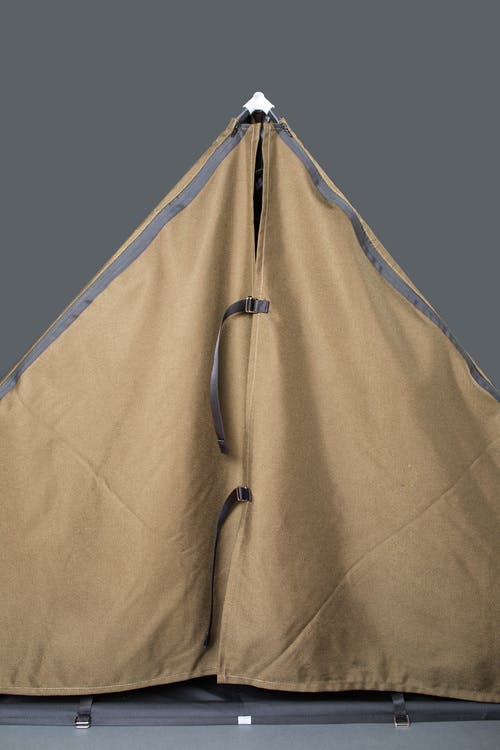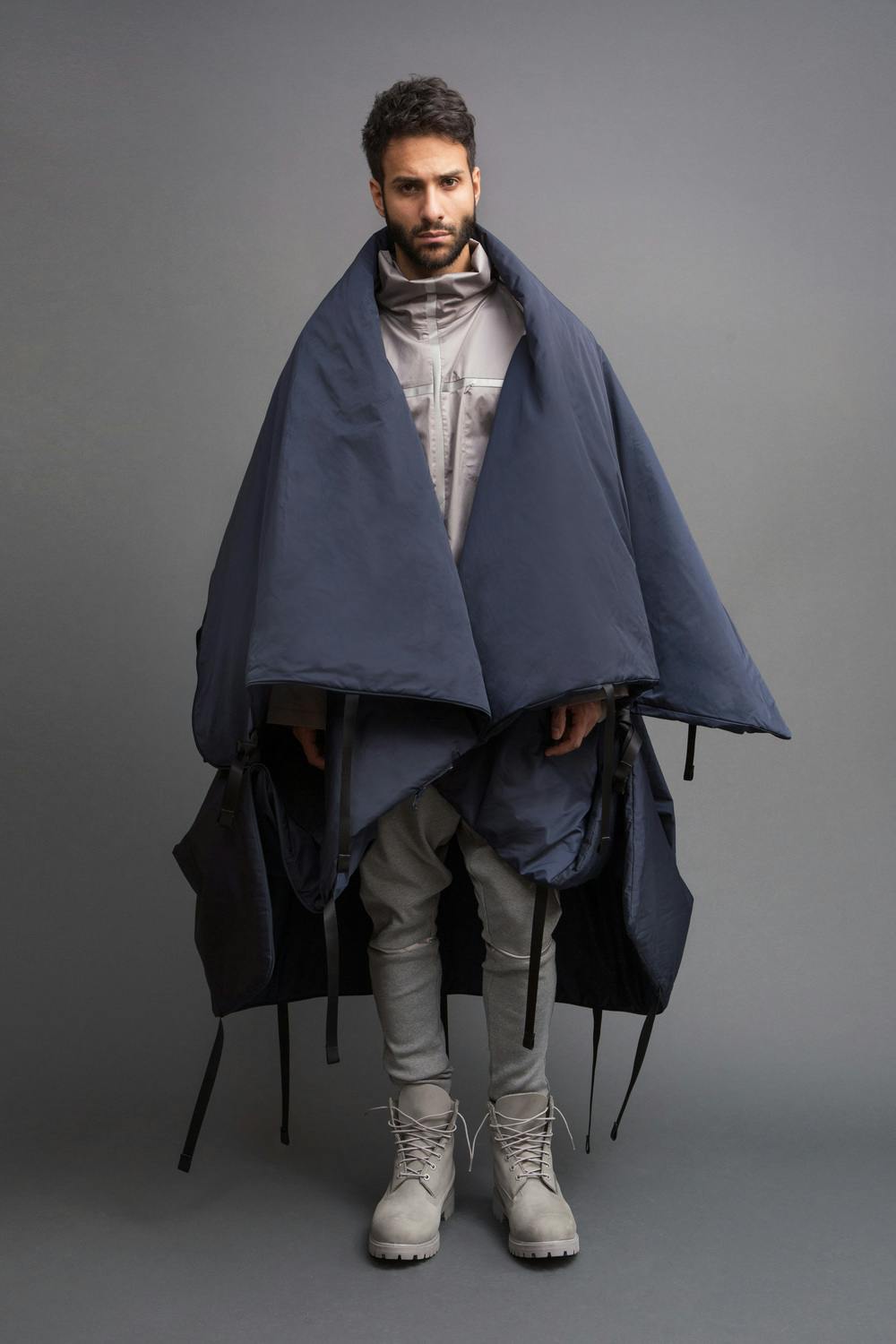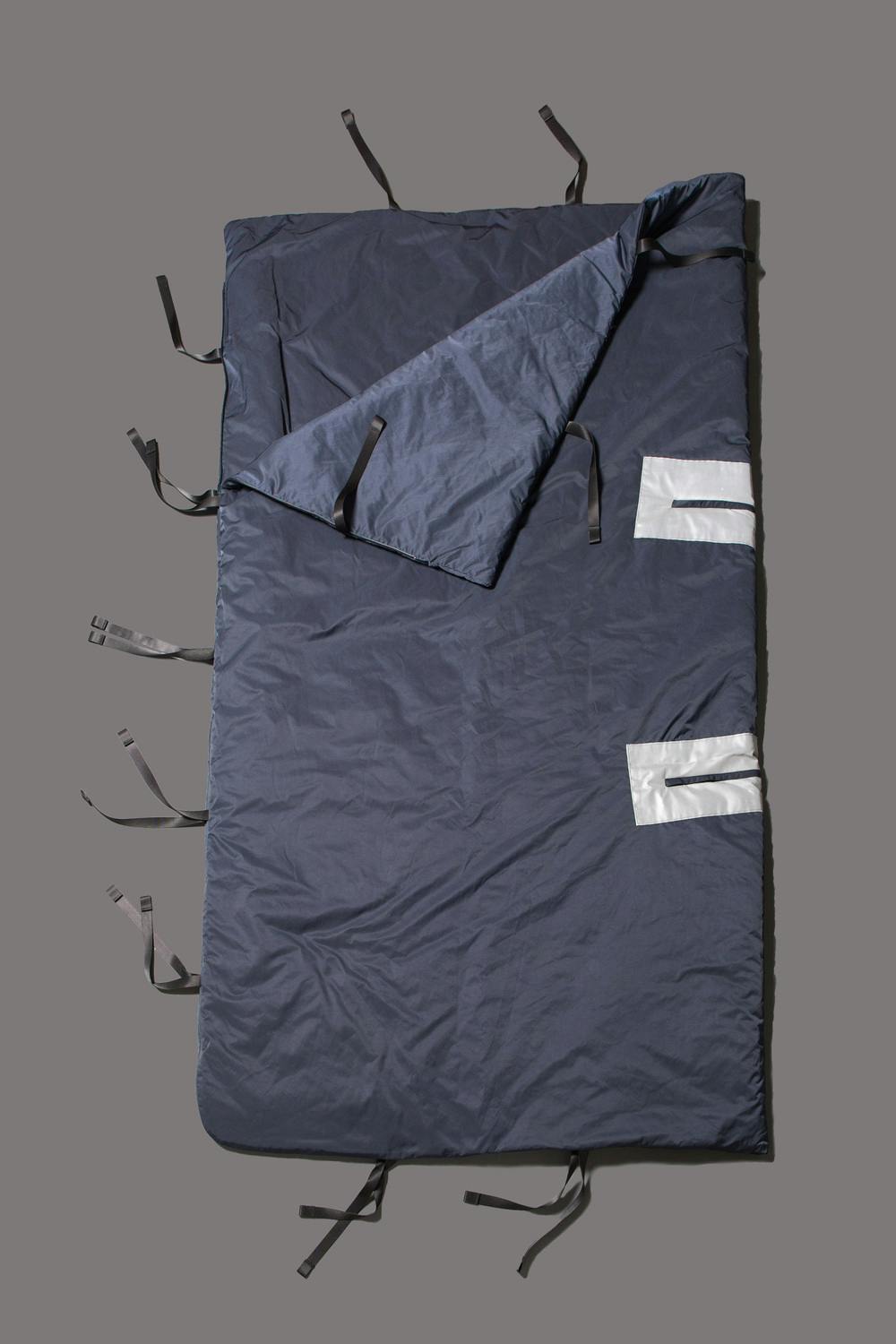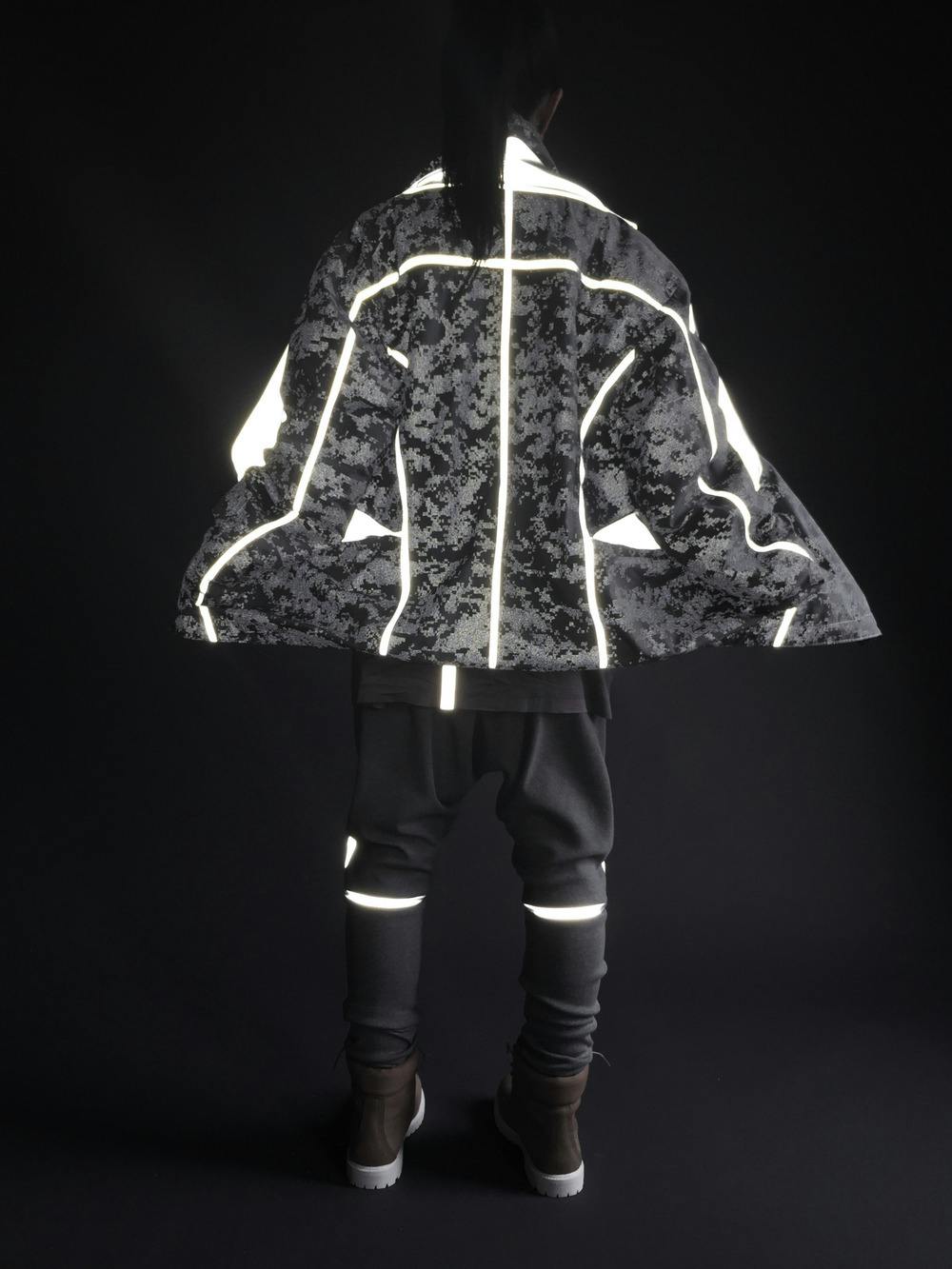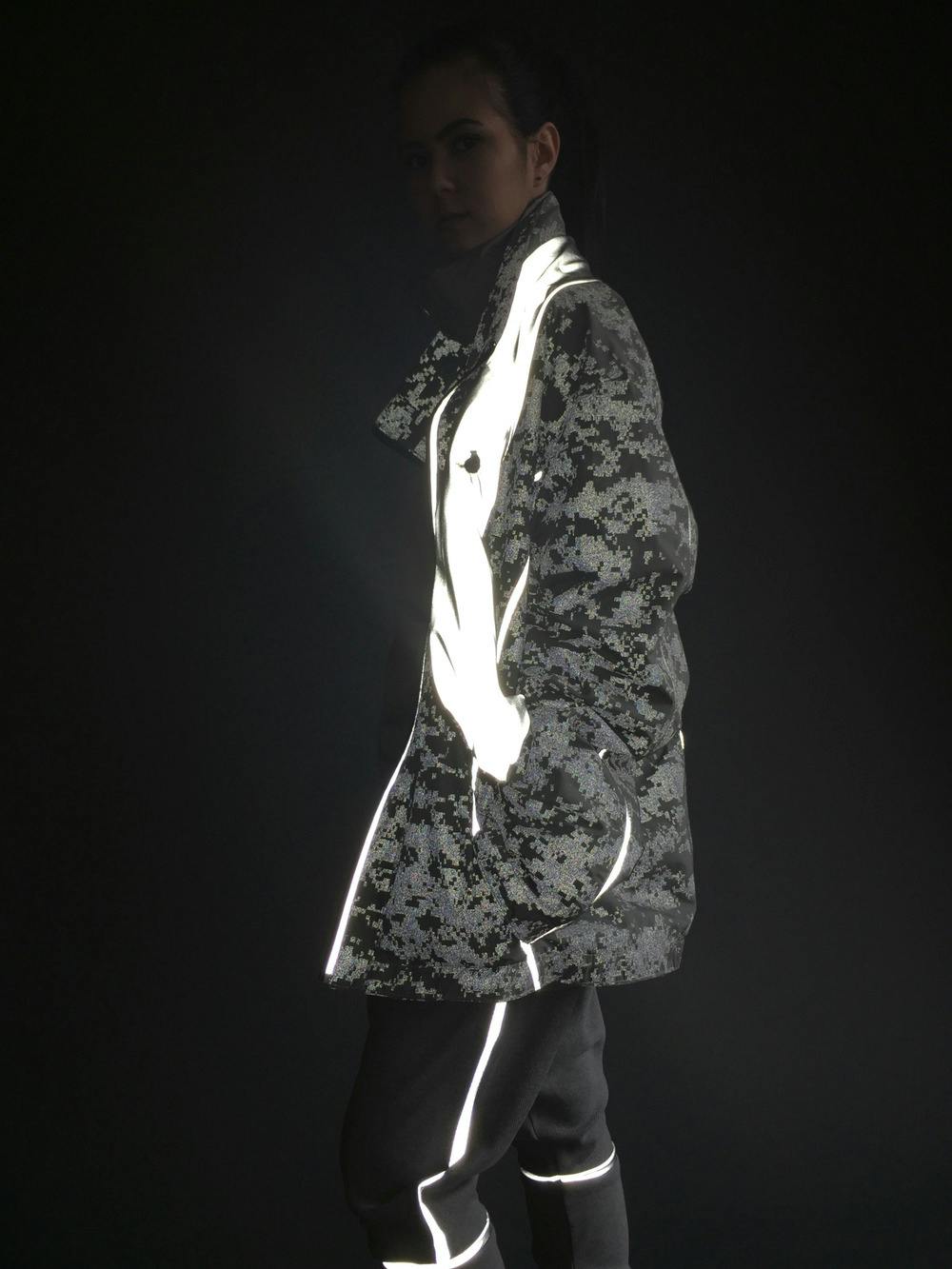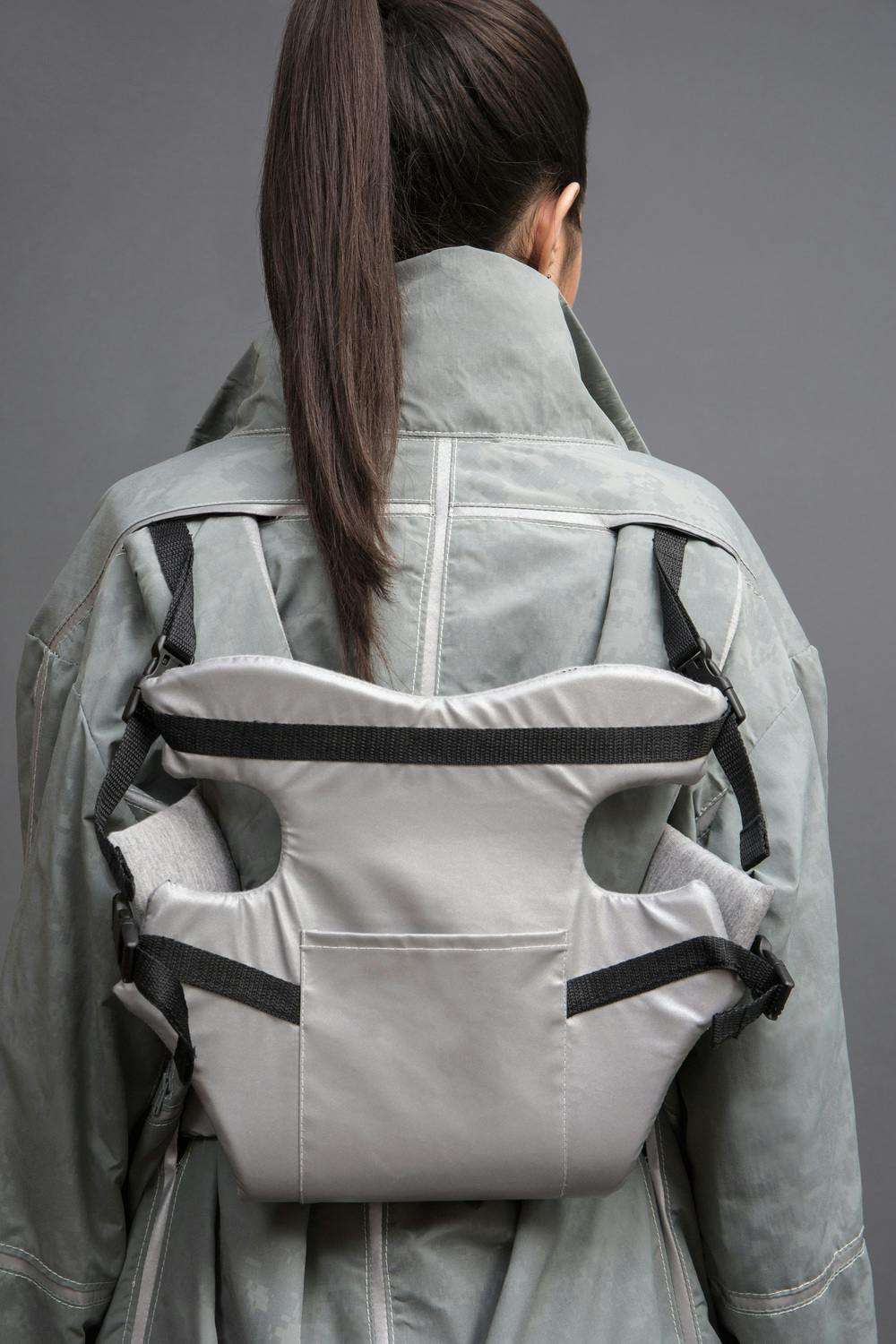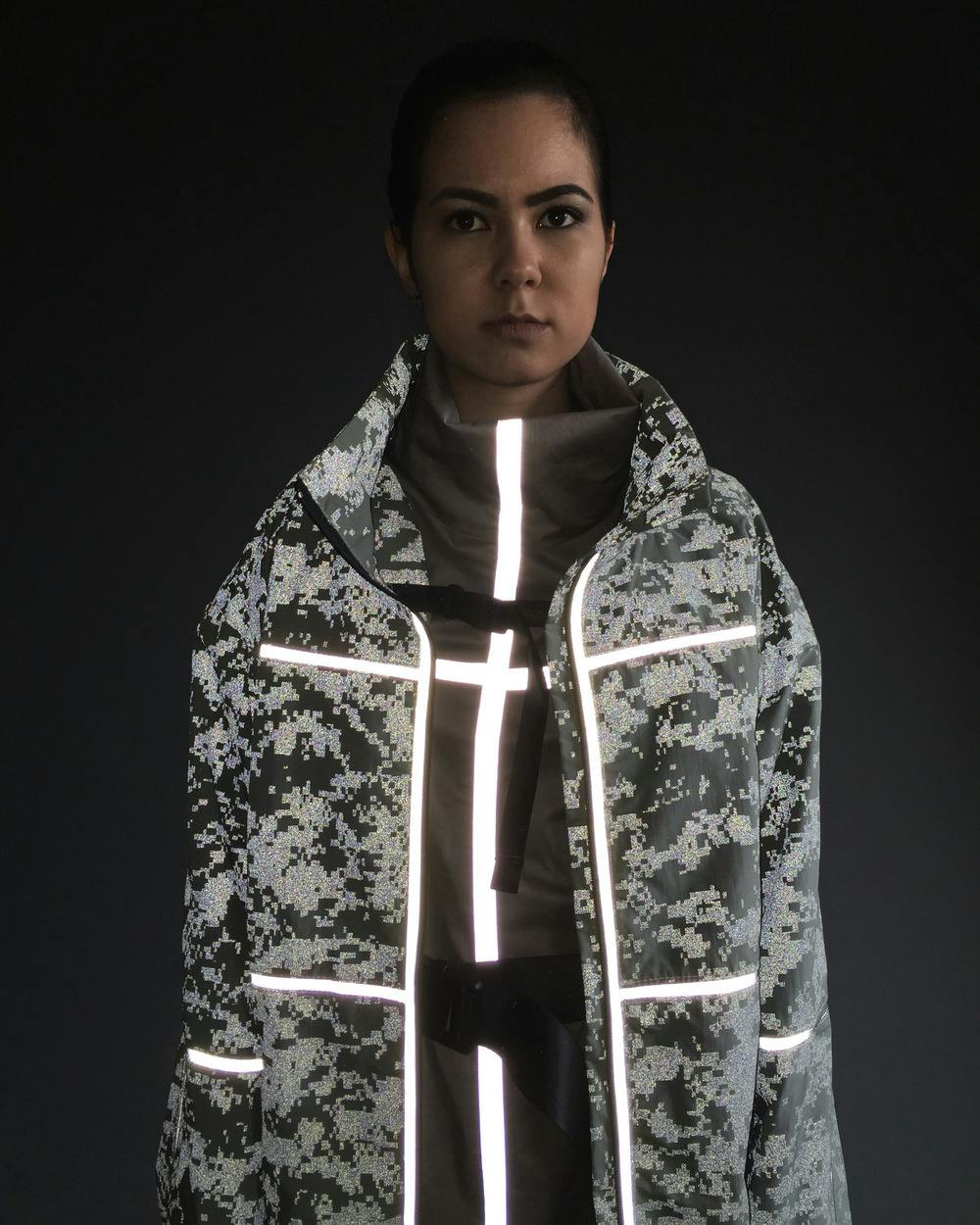Three weeks into her senior thesis project, Parsons School of Design student Angela Luna scrapped her work on her couture and evening wear collections. The 22-year-old Beverly, Massachusetts native and New York City transplant decided to create something much more humanitarian—a collection with the needs of journeying, displaced Syrian refugees in mind.
Like many following the news, Luna was distraught over the Syrian refugee crisis and wanted her concern to overcome the obstacle of geography. “I decided to make a switch and approach the refugee crisis with a design eye to see what I could come up with,” Luna told the Daily Dot. “I started out not knowing what I would do, and then found this project’s niche in solution-based design.”
From there, the blueprints of her senior thesis collection, “Design for Difference: Crossing the Boundary,” soon materialized and became far more than a side project. It grew into ADIFF: Design Intervention for Global Issues, an all-encompassing brand that strives to make fashion a solution for refugees.
According to its website, the Crossing the Boundary collection is “a unisex, one-size collection, with garments that serve multiple, transformable purposes.” Depending on the style, a jacket can function as a tent for six people, a sleeping bag, a backpack, a child carrying harness, or a flotation device. These garments are weatherproof, functional, and durable with the capacity to endure different environments. The apparel is to be manufactured with sustainable materials recycled from trash.
Due to the garments’ balance of both practicality and style—as well as the press it garnered from winning both Parson’s Womenswear Designer of the Year Award and the Eyes on Talents Innovation Award—Luna’s brand gained instant recognition. Though she had no intention of marketing the garments beyond donation, Luna started receiving inquiries of purchase based on the line’s prototypes. She eventually decided to sell select pieces to retail stores for edit (texture, material, durability, color) in order to raise profits for production and distribution costs.
“It was kind of a way to repurpose the money coming into the fashion industry and having it go toward giving back,” Luna said. The collection’s business model is much like that of TOMS shoes, meaning for every garment sold, another garment will be donated to a person in need. Plus, fifty percent of the profits will be set aside to help Luna finance a way for the clothing to reach refugees, which she hopes to do before the end of winter. Her work has received interest from the U.N. refugee agency (UNHCR) and other humanitarian aid groups, and she hopes to soon collaborate with tech companies and non-profits.
As Luna’s mission has taken a broader turn, she also aims to tailor the garments for any “displaced persons,” not just those in Syria. In fact, she travels to Greece this week with a non-profit organization called Carry the Future to test out the clothing within camps. She says she wants “to see which of the garments is most useful in which scenarios and where they will be most usefully placed around the world.”
Over the next two years, she also plans to permanently relocate herself and her projects to Europe in order to provide long-term solutions closer to the crisis. “It’s my hope to resettle refugees working within business operations, whether that’s through finance, design, marketing, production, or whatever skill set they have,” Luna said. “I want to provide ethical and sustainable wages for them as well as offer community building activities. It’s within the brand to provide these solutions to refugees.”
Originally, Luna’s post-graduation plans were to work as an assistant designer for Abercrombie & Fitch. And now Luna hopes that her work will spark dialogue and action, serving as a precedent for philanthropic efforts in both the political sphere and the fashion industry.
“I’m trying to change the system of fashion but such dramatic shifts like this are never easy,” she said. “So the best thing right now is being able to become a voice and a changemaker for this issue.”
You can donate to ADIFF here.

